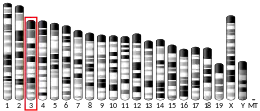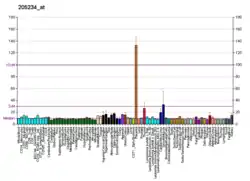| SLC16A4 | |||||||||||||||||||||||||||||||||||||||||||||||||||
|---|---|---|---|---|---|---|---|---|---|---|---|---|---|---|---|---|---|---|---|---|---|---|---|---|---|---|---|---|---|---|---|---|---|---|---|---|---|---|---|---|---|---|---|---|---|---|---|---|---|---|---|
| Identifiers | |||||||||||||||||||||||||||||||||||||||||||||||||||
| Aliases | SLC16A4, MCT4, MCT5, solute carrier family 16 member 4 | ||||||||||||||||||||||||||||||||||||||||||||||||||
| External IDs | OMIM: 603878 MGI: 2385183 HomoloGene: 74529 GeneCards: SLC16A4 | ||||||||||||||||||||||||||||||||||||||||||||||||||
| |||||||||||||||||||||||||||||||||||||||||||||||||||
| |||||||||||||||||||||||||||||||||||||||||||||||||||
| |||||||||||||||||||||||||||||||||||||||||||||||||||
| |||||||||||||||||||||||||||||||||||||||||||||||||||
| |||||||||||||||||||||||||||||||||||||||||||||||||||
| Wikidata | |||||||||||||||||||||||||||||||||||||||||||||||||||
| |||||||||||||||||||||||||||||||||||||||||||||||||||
Monocarboxylate transporter 5 is a protein that in humans is encoded by the SLC16A4 gene.[5][6]
See also
References
- 1 2 3 GRCh38: Ensembl release 89: ENSG00000168679 - Ensembl, May 2017
- 1 2 3 GRCm38: Ensembl release 89: ENSMUSG00000027896 - Ensembl, May 2017
- ↑ "Human PubMed Reference:". National Center for Biotechnology Information, U.S. National Library of Medicine.
- ↑ "Mouse PubMed Reference:". National Center for Biotechnology Information, U.S. National Library of Medicine.
- ↑ Price NT, Jackson VN, Halestrap AP (January 1998). "Cloning and sequencing of four new mammalian monocarboxylate transporter (MCT) homologues confirms the existence of a transporter family with an ancient past". The Biochemical Journal. 329 (2): 321–8. doi:10.1042/bj3290321. PMC 1219047. PMID 9425115.
- ↑ "Entrez Gene: SLC16A4 solute carrier family 16, member 4 (monocarboxylic acid transporter 5)".
Further reading
- Halestrap AP, Price NT (October 1999). "The proton-linked monocarboxylate transporter (MCT) family: structure, function and regulation". The Biochemical Journal. 343 (2): 281–99. doi:10.1042/bj3430281. PMC 1220552. PMID 10510291.
- Halestrap AP, Meredith D (February 2004). "The SLC16 gene family-from monocarboxylate transporters (MCTs) to aromatic amino acid transporters and beyond". Pflügers Archiv. 447 (5): 619–28. doi:10.1007/s00424-003-1067-2. PMID 12739169. S2CID 15498611.
- Maruyama K, Sugano S (January 1994). "Oligo-capping: a simple method to replace the cap structure of eukaryotic mRNAs with oligoribonucleotides". Gene. 138 (1–2): 171–4. doi:10.1016/0378-1119(94)90802-8. PMID 8125298.
- Suzuki Y, Yoshitomo-Nakagawa K, Maruyama K, Suyama A, Sugano S (October 1997). "Construction and characterization of a full length-enriched and a 5'-end-enriched cDNA library". Gene. 200 (1–2): 149–56. doi:10.1016/S0378-1119(97)00411-3. PMID 9373149.
- Pilegaard H, Terzis G, Halestrap A, Juel C (May 1999). "Distribution of the lactate/H+ transporter isoforms MCT1 and MCT4 in human skeletal muscle". The American Journal of Physiology. 276 (5 Pt 1): E843-8. doi:10.1152/ajpendo.1999.276.5.E843. PMID 10329977.
- Manning Fox JE, Meredith D, Halestrap AP (December 2000). "Characterisation of human monocarboxylate transporter 4 substantiates its role in lactic acid efflux from skeletal muscle". The Journal of Physiology. 529 (2): 285–93. doi:10.1111/j.1469-7793.2000.00285.x. PMC 2270204. PMID 11101640.
- Philp NJ, Wang D, Yoon H, Hjelmeland LM (April 2003). "Polarized expression of monocarboxylate transporters in human retinal pigment epithelium and ARPE-19 cells". Investigative Ophthalmology & Visual Science. 44 (4): 1716–21. doi:10.1167/iovs.02-0287. PMID 12657613.
- Juel C, Holten MK, Dela F (April 2004). "Effects of strength training on muscle lactate release and MCT1 and MCT4 content in healthy and type 2 diabetic humans". The Journal of Physiology. 556 (Pt 1): 297–304. doi:10.1113/jphysiol.2003.058222. PMC 1664883. PMID 14724187.
- Settle P, Mynett K, Speake P, Champion E, Doughty IM, Sibley CP, D'Souza SW, Glazier J (July 2004). "Polarized lactate transporter activity and expression in the syncytiotrophoblast of the term human placenta". Placenta. 25 (6): 496–504. doi:10.1016/j.placenta.2003.11.009. PMID 15135232.
- Wilson MC, Meredith D, Fox JE, Manoharan C, Davies AJ, Halestrap AP (July 2005). "Basigin (CD147) is the target for organomercurial inhibition of monocarboxylate transporter isoforms 1 and 4: the ancillary protein for the insensitive MCT2 is EMBIGIN (gp70)". The Journal of Biological Chemistry. 280 (29): 27213–21. doi:10.1074/jbc.M411950200. PMID 15917240.
- Merezhinskaya N, Ogunwuyi SA, Fishbein WN (February 2006). "Expression of monocarboxylate transporter 4 in human platelets, leukocytes, and tissues assessed by antibodies raised against terminal versus pre-terminal peptides". Molecular Genetics and Metabolism. 87 (2): 152–61. doi:10.1016/j.ymgme.2005.09.029. PMID 16403666.
- Bickham DC, Bentley DJ, Le Rossignol PF, Cameron-Smith D (April 2006). "The effects of short-term sprint training on MCT expression in moderately endurance-trained runners". European Journal of Applied Physiology. 96 (6): 636–43. doi:10.1007/s00421-005-0100-x. PMID 16408234. S2CID 10354316.
- Ullah MS, Davies AJ, Halestrap AP (April 2006). "The plasma membrane lactate transporter MCT4, but not MCT1, is up-regulated by hypoxia through a HIF-1alpha-dependent mechanism". The Journal of Biological Chemistry. 281 (14): 9030–7. doi:10.1074/jbc.M511397200. PMID 16452478.
- Bishop D, Edge J, Thomas C, Mercier J (February 2007). "High-intensity exercise acutely decreases the membrane content of MCT1 and MCT4 and buffer capacity in human skeletal muscle". Journal of Applied Physiology. 102 (2): 616–21. doi:10.1152/japplphysiol.00590.2006. PMID 17082373. S2CID 336956.
This article is issued from Wikipedia. The text is licensed under Creative Commons - Attribution - Sharealike. Additional terms may apply for the media files.




